#ganga bath
Explore tagged Tumblr posts
Text

Varanasi, India 1972
Bathers, Ganges River
Photograph by Nick DeWolf https://www.flickr.com/photos/dboo/14731760433
14 notes
·
View notes
Photo

in the depths of my being, She dances me to her call:
“come to me. I want all of you, my child. no part of you is too dark, too gritty, too cruel for me. I claim all of you.”
Māiyā! your waves carry your call and roll it against my chest. i seek you with my breath, eyes, hands, and knees. my lungs seek you like they seek air.
Ya Devī! soothing her tears,
Kṛṣṇa told Pāñcālī
that just as you, Śrī Gaṅgā, hold and wash all pollutions yet are ever-pristine,
so does the fallen empress remain untainted by her shame.
aches bathed in your luster,
i plead:
take all of me, Devī.
leave nothing of me behind.
establish me in knowing
that despite my wrongs, fears and corruptions, i, too,
your fragment in the microcosm,
remain unmarred.
may the holy flow of your untamed waters
sweeten the harshness i bear towards myself and the world
soften the rigid corners straining my being
loosen the knots hindering you from coursing within me.
Śrī Mātre Namaḥ.
photos: before & after bathing in the waters of Śrī Gaṅgā in the auspicious Gangotri. Śabda Yātra. the blessing of blessings.
#bhakti#poem#poetry#poetess#draupadi#ganga#krishna#devi ganga#ganges#gangotri#himalayas#india#bathing in ganga#uttarkashi#uttarkhand#holy waters#sacred river#bhakti poetry#tea nicolae poetry#devotional poetry
13 notes
·
View notes
Text
गंगा में स्नान करने गए बॉलीवुड एक्टर अजय कुमार शाह की डूबने से हुई मौत, पुलिस ने ढूंढकर निकाला शव
Actor Ajay Kumar Death: बॉलीवुड अभिनेता अजय कुमार शाह की गंगा नदी में डूबने से मौत हो गई है। मुंबई में र��ने वाले अभिनेता अजय कुमार अपने गांव आरा आए हुए थे। धार्मिक पूजा-पाठ करने के लिए अजय कुमार गंगा स्नान करने गए थे। इसी दौरान नदी में डूबने से अजय कुमार की मौत हो गई। बताया जा रहा है कि मौके पर पहुंची पुलिस के सामने अभिनेता के शव को बाहर निकाला गया। मृतक अभिनेता अजय कुमार ने बॉलीवुड की कई…
0 notes
Text

0 notes
Text
Ganga Maa: गंगा स्नान से होती है मोक्ष की प्राप्ति, जानें क्या है इसका पौराणिक महत्वहमारी सनातन संस्कृति प्रकृति के साथ जुड़ी हुई है। इसलिए आपने देखा होगा कि जब भी कोई धार्मिक त्योहार पर्वया मृत आता है तो सर्वप्रथम लोग गंगा स्नान के लिए जाते हैं। गंगा नशे को हमारे बाहरी शरीर को शुद्ध करती है बल्कि हमारे आंतरिकमंत्र को भी शुद्ध करती है हमारे हिंदू संस्कृति में गंगा को माता का दर्शन दिया गया हैऔर इसके पीछे पौराणिक कारण तो है ही मैकेनिक पहलू भी है। क्योंकि एकमात्र गंगा का ही चल ऐसा जल है जो कभी भी खराब नहीं होता है और इसका वैज्ञानिक प्रमाण भी अब मिल ही चुका है।
#Ganga maa#ganga importance#ganga snan#ganga bath benefits#ganga kaise bani#ganga mata ki utpatti kaise hui#my jyotish#ganga snan ke fayde#Blogs Hindi News in Hindi#Blogs Hindi Hindi News
0 notes
Text



Ganga bathing with students can be a great way for them to learn about the importance of taking care of the environment and the importance of cleanliness. It can also be a great way to get them to understand the spiritual significance of the river and its connection to Hinduism. It can also give them a chance to appreciate the beauty and power of the river. Finally, it can be a great way to just relax and enjoy being in the sacred waters of the Ganga.
0 notes
Photo
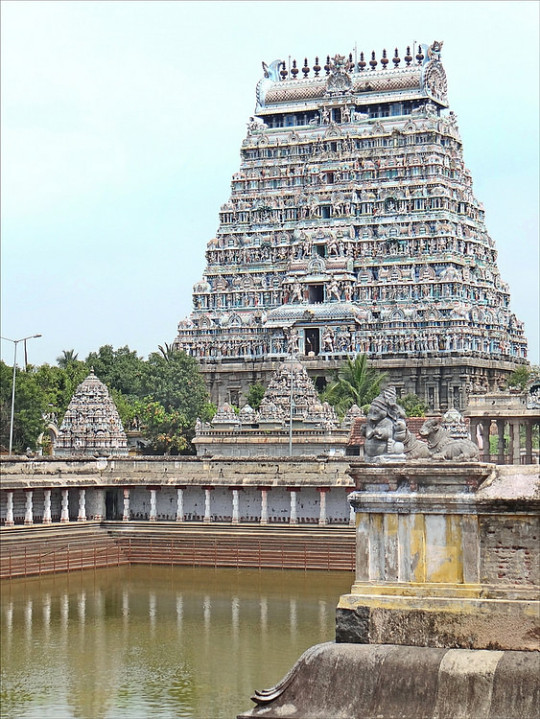
Chidambaram
Chidambaram (Cidambaram) is an important Chola temple site in Tamil Nadu, southern India. Most of the temples at Chidambaram were built in the 12th and 13th centuries CE. The site is dominated by the huge gateway tower of the Nataraja temple but Chidambaram also boasts the first Devi or Amman shrine, the first Surya shrine with the distinctive stone chariot wheels which would adorn many subsequent temples, and the first large Siva Ganga tank. In this respect Chidambaram is something of a transitional site, linking elements of the old and new styles of Indian temple architecture.
The name Chidambaram, one of several from antiquity, derives from the Tamil Cirrambalam, meaning 'little hall'. The site was chosen because according to mythology it was the precise spot where the Hindu god Shiva had once danced in a grove of tillai trees. The dance was, in fact, a competition between Shiva and Parvati and naturally the great Shiva won. The story became a popular subject in Hindu art over the centuries.
The site is enclosed within four perimeter walls and covers a rectangular area of 55 acres. Within the compound are shrines, halls, temples, ornamental gateways, and a large ritual bathing pool, known as a Siva Ganga tank, which is surrounded by cloisters. Inscriptions claim the site was built by various Pandya kings and local rulers but none are contemporary with the dates the buildings were actually first constructed. The walls and east gopura (gateway) may be ascribed with greater certainty, and were probably built by Kulottunga III, who reigned from 1178 to 1218 CE.
The Nataraja temple was constructed between c. 1175 and c. 1200 CE. The actual temple shrine is relatively modest as by now in Indian architecture the gopuras had become the most important structures, at least in terms of aesthetics. The twin sacred chamber was, however, adorned with copper sheets covered in gold by successive Chola kings. The shrine is preceded by a dance hall and large entrance porch with columns (mandapa).
The massive granite and brick east gopura dominates the site but there are three other gopuras on the north, south and west sides (the earliest). The corbelled roofs diminish as the structures rise and are finally topped with the usual barrel-vaulted roof (sala), the eastern gopura also having a row of 13 decorative finials. The east gopura has a proper interior floor at each of its nine levels and there is an interior staircase which climbs to the very top of the building. All four gopuras have false windows on their facades, typical for this kind of structure, and pairs of pilaster columns set at regular intervals. The second floor of each gopura also has a passageway which worshippers ritually walked around. The entrance archways all have coffered ceilings decorated with relief panels.
Of particular note at Chidambaram are the thousands of sculptures adorning its buildings. In particular there are many statues of women in a wide variety of dance postures. Many statues are accompanied by quotations from Hindu literature which provide an invaluable reference for scholars. There are also figures of the four dvarapalas (guardian demons), the dikpalas (cardinal directions), many figures of Shiva performing heroic deeds, various other deities such as Vishnu, Devi, Sarasvati, and, unusually in southern architecture, river goddesses.
Finally, Chidambaram is also famous for its 17th century CE Nayaka ceiling paintings which decorate the Shivakamasundari shrine of the Nataraja Temple. More than 40 panels depict scenes from the life of the saint Manikkavachakar, a devotee of Shiva.
Continue reading...
90 notes
·
View notes
Text
it's gonna be 2 years since I accidentally came up with a pickup line while bathing in the ganga after immersing my dadi's ashes
19 notes
·
View notes
Text
Raghuvan, Teri raah nihaare
Chapter 9
Ram's head pounded as if someone hit a cricket ball on his forehead. The sunlight was unbearable, and the soft morning wind kissed his cheeks. He felt his bed under his palm, unable to open his large brown eyes. A bed, he thought. Who's bed? Babai wouldn't have taken him back. Was it Sita's bed? He peeked his eyes open, just to be met by the wooden window of his room. His own bed. How did he come here? Where was he last? Ram remembered leaving Sita's place, making his way to the liquor store. That's the place for people who have nowhere left to go. Someone must have dropped him by then. He must thank them.
His unconscious train of thoughts was interrupted by a loud cracking of laughter. Women, laughing. He sat up to see the door frame of his room wrapped in marigold. Did he miss something?
Ram peaked over the balcony railing to look down by the hall, only to find Adikavya's parents and Babai having tea. His heart fell. Was the marriage not broken? Running his hand through his hair, Ram made his way back in the room. The wind of the window brought the sweet noises from sita Mahal. Oh how dearly he missed being there. But the dreams and pleasures are only limited in this world. Ram sighed, as if the faraway walls of the palace would give him a glimpse of Sita.
Jangu appeared behind him, a tray with a cup of tea on it. "Sita came last night" Ram's hand stopped in the track. Before another second passed by, Ram placed the tray on the table and pulled jangu on a chair. "When? Where was I? Did she come to meet me? What was she doing here?"
"She came to talk to Babai. You were passed out in Adi Didi's storage room. Adi didi and sita must have talked for a while, because they both left when I brought you back home. Sita asked Babai to get you married to Adi Didi. Babai and adi Didi's family had a long talk before coming to the conclusion. It's your engagement tonight".
Ram had a hard time processing that. His pounding head felt heavier. "I was in Adikavya's storage room?" Ram looked at Jangu. The innocent face nodded. "I dragged you back home last night. You were out cold."
Ram slumped back in his chair. There it is, the inevitable moment. Jangu got up to leave, when he abruptly stopped in his tracks and looked back at Ram. "She is pretty, even at midnight, she looked so beautiful and different". Ram's heart hammered in his chest. He closed his eyes, gulping down all the emotions bottled in.
______________________________
It was like a swift rain. Everything at sita Mahal went back to how it was before Ram came. Though it did change a few things- the girls asked if Ram would come again, as they dearly missed his stories of abroad and Sita laughed more than usual. She's been so cheery, as if she was happy for the knot. But the close ones knew, that if Sita wouldn't laugh she wouldn't be able to put a dam on her tears.
The morning was not unlikely of any other ones. Sita would wake up, bathed, did Pooja, did a few house chores, got ready, and attended her guest for the evening. But when sita was busy getting ready for her guests that evening, someone knocked on her door.
Akhtar.
Despite sending him back, Akhtar returned again. Sita thought hard, why would Adikavya's college friend come to her place? But there was no point in anything now. And if someone saw him in Sita Mahal too, he'd lose his privileges too. Sita chuckled at herself. She kept her saree down, poking the safety pin in the diwan bed.
"Haala" Sita caught the attention of the young girl "show him the back entrance".
Haala was unsure how to feel. She knew well that a whore can't be a daughter in law, but Sita deserved it. Sita deserved Ram. Haala was sure about one thing though, that if Sita wouldn't have put a restriction on Ram, Ram would have eloped with Sita by now.
Akhtar saw the blank face of Haala. Wordlessly, he followed her.
Sita sat by the ganga, drinking from the canister. Akhtar clasped his hands close to himself.
"I-"
"Cut the crap" Sita's eyes didn't leave the silent waves reflecting sunlight.
"Why did you ask Babai to let them get married"
"I wanted his happiness"
"what about her?"
"she'll be happy too"
"how do you know?"
"why are you here" sita peered up.
"don't you deserve happiness?"
"I'd get it when life wants to bless me with it"
"it did and you placed it in an old man's hand" Akhtar sat down next to her.
Sita smiled.
"It's obvious how much Ram and you love each other"
"How are you even involved in this..love triangle?"
Akhtar chuckled "this is not a love triangle. Adikavya and Ram have nothing towards each other. And I do. And I know it won't be possible, so I'm asking you to at least let her have her part of happiness".
Sita intently stared at Akhtar. "Nothing can be done now" she muttered.
"Then there's that. If that's what the universe wants. But if there is at least a single chance that you and Ram can be together, you are going to regret it for your life. You will see his face in every man you encounter and no one will be enough like he was. You are going to think about him when you won't be thinking about anything, and you are going to find everything in the world that is even remotely close to him. His emotions, name, its meaning, his interests and his choices. The only thing you will lose from his choice will be only you".
Sita gaped at him, blankly, her heart sinking to the bottom of the river. The only noises audible was chatter at the back of her place and swooshes of ganga.
"And I know that because I already do it. I already regret not letting her know, not supporting her decisions and not being there carrying all the weight. Just thinking about it isn't enough, Sita."
The way Akhtar called her name sent chills up her spine. She couldn't take whatever he said, keeping her hand on the staircase to stabilize herself. Akhtar didn't care. If he ever got over blaming himself, he only has one more person to blame. He left in a motion, unseen and unfavorable to Sita.
Sita didn't sit in the court that night.
------------
tagging- @budugu @thewinchestergirl1208 @rambheemlove @ramayantika @bishh-kanya @chaanv @nyotamalfoy @obsessedtoafault @phoenix666stuff @iam-siriuslysher-lokid @cursedcursives @hopelessdemonic @nerdreader @bitchy-bi-trash @vijayasena
#ghungru#ram charan#rrr#rrr movie#desi tag#fanfic#ram x reader#ram x wife!reader#rambheem#rrr tarak charan
22 notes
·
View notes
Text
Mrityunjay: Durykarna (1)
bro B r o BRO I'm halfway through Mrityunjay, right now on Duryodhan's POV and I SHIT YOU NOT his description of Karna is straight (hah) out of a fucking romance novel.
I MEAN THIS SHIT;?!!!?! Fucking G O L D

(The following translation sucks but trust me when I say that this gay loser describes Karna in the most flowery way POSSIBLE)
He (Karna) has a way of making all those who were close to him, his own in every way. With his many attractive qualities, he has won over the vast majority of citizens in this capital city. But his most powerful and mesmerizing trait is his enviable personality (in this context; his physical appearance). Whenever he stands in front of me, I don't know why but it feels like there are countless particles of radiance fluttering right in front of me. Every time I look into his blue eyes, the blue vastness of the sky pales in comparison.
Sometimes, I would run into him on the royal staircase of the palace as he was returning from a bath (in river Ganga). I will never be able to forget the way he looked then. The way the residue of the clear droplets of Gangetic water shines brilliantly in his wet, curly golden hair, it reminds me of dewy sunflowers in the garden that dance to the tune of the wind.
His gentle swaying earrings, his magnificently smooth forehead, his nose as straight as a flagpole, the colour of reddish-pink lotuses flushed across his cheeks, arched golden eyebrows racing towards his ears, biceps as large as an elephant’s trunk, the carved, glowing muscles of his calves, his broad and elevated chest could be likened to the huge back of one of the mega turtles of Ganga, his neck round and thick like an arrowhead, his shoulders were strong and chiseled, not unlike a bull’s and all of these features were beautifully enhanced with his sunlike round face!
In my opinion, there was no other man that could rival Karna’s distinguished beauty (and caliber) in the entirety of Hastinapur. He’s reserved and talks very little. But his silence is a living commentary! Whenever he speaks, the sound resembles the clear gong of a mace smashing against another, grainy and deep.

In the terms of voice and the style of speaking, Karna is only second to the Grandsire (Bhishma), who is my favourite.
Sometimes while talking, he would break into a breath-taking smile and his teeth would cast a golden glow and I...
and I forget Guru Drona’s hurtful neglect towards me, forget the insults hurled at me by Bhima-Arjun, hundreds of wounds that scrap the deepest corners of my heart are long forgotten. I forget that I’m the crown prince of the Kurus, forget that tomorrow I’m going to be the emperor of Hastinapur. And like the endless buzzing of a bee, only one thought starts spiraling in my head--
“Is Karna really a Suta (the son of a Suta)? In the modest hut of a charioteer, could a man bearing such an ethereal form be born? Is Karna really inferior?”
Then my soul tells me quite defiantly, “Karna is not a charioteer’s son! He is the epitome of brilliance! How can a glowing jewel (*paraphrased) be born in a cave of darkness? Karna must be some celebrated king’s bright and courageous son. Karna must be a Kshatriya!”
@kaurava-apologist @rorapostsbl
#I am OBSESSED with this book#all the many descriptions of Karna are absolutely amazing#but this one in particular maddens me in the best possible ways because duryodhan??? HELLO?????#might wanna tone down the gay a bit there buddy llike jesus fucking christ#if I didn't know any better I'd say they 100% fucked#but then again the canon doesn't explicitly say that they DIDN'T soooooo Lmao#anyway#enjoy this little thing#Part two coming soon because I'm deranged and there's a shit ton more from where this came from#Shivaji Sawant sir let me kiss you on the mouth istg#even if his Dury is a complete asshole atleast he's GAY ON MAIN so its okay#mrityunjay#marathi novel#shivaji sawant#mahabharat#karna#duryodhana#karna x duryodhan#durykarna#mahabharata
114 notes
·
View notes
Text
What Are the Sawan 2024 Rituals and Significance?
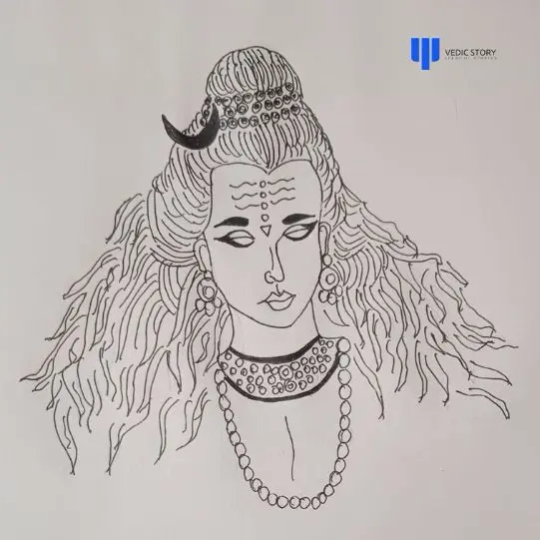
Hindu mythology is full of interesting Vedic tales. One such legend we narrated at Vedic Story about the Sawan Shivratri in Hinduism. However, today we are discussing why Sawan Month is important in Hinduism. What is the significance, and should devotees observe the religion fasting or vrat?
Before we start narrating the significance of Sawan Shivratri month, let’s inform you that the Sawan began on July 22 and it will end on August 19.
What Are the Important Timings of Sawan 2024?
Sawan is the most important month in Hinduism and the Panchang Calendar.
It is the sacred month of Sawan, the month of rain, religious fasting, fertility, and soul purification.
Sawan month is a month of Lord Shiva that lasts for a full lunar cycle and starts Ashadha Purnima. However, the month is also known as the Shravan and Kawar Shivratri or Kawar Yatra. It began on 22nd July, Monday, and will end on 19th August, Monday. It lasts for 1 month, and this year the festival is going to last for 29 days.
What is the significance of the Sawan Shivratri Vrat or festival?
Sawan 2024 fast has special meaning and space in Hinduism. Sawan Sonwar Vrat is a rite that unmarried girls perform for getting grooms with qualities of Lord Shiva.
Goddess Parvati also performed Sawan Shivratri to get married with Lord Shiva in the month of Sawan. Thereafter, it became a ritual for Indian women to fast in Sawan month.
Indian mythology and sacred texts of Shiva Purana narrates that whoever keeps the fast in Sawan month on Mondays, Lord Shiva will bless them and fulfill the wishes.
Every Monday, devotees observe the fast throughout the day without eating food or water and pray to Lord Mahadev.
What Are the Rituals Devotees Can Perform During Sawan 2024 Month?
Throughout the sacred Sawan month 2024, devotees of Lord Shiva can pray by performing some rituals that not only clean the devotees internally but also bring happiness into their lives.
Kanwar Yatra
Kanwar Yatra is a festival that devotees perform by going to Haridwar and bringing holy Ganga water barefoot. This pilgrimage yatra signifies the cascading of Goddess Ganga from heaven into the life of Lord Shiva to cool down his poison.
Fasting
Many people in Hinduism perform fasts, the Sawan Somwar Vrat, throughout the month. They don’t consume food and water until the evening and after the prayer of Lord Shiva.

Shiva Lingam Abhishek
Devotees in Sawan month perform rituals and rites that cool down Lord Shiva and bless them with prosperity and happiness. They bathe Shiva Linga with water, milk, honey, datura, vel patra, and flowers. This ritual signifies the purification of devotees.
Chanting Mantras
Devotees chant the Shiva mantras, especially the Maha Mrityunjaya Mantra in Sawan. It is believed that whoever chants the mantra gets protection from Lord Shiva himself and is blessed with long life.
What Are the Other Festivals Falling in the Month of Sawan?
Sawan month is sacred and has many ancient legends to this month.
Let’s find out some of the most auspicious festivals and Vrat fall in this month.
Shravan Shivratri: This festival falls in the Krishna Paksha of Sawan month. Devotees of Lord Shiva perform fasts and perform puja to the blessings of Mahadev.
Nag Panchami: It falls on the fifth day, Panchami of the Shukla Paksha. People worship snakes in this festival to get protection from snake bites.
Hariyali Teej: This festival also falls in the Sawan month. People worship Goddess Parvati and seek her blessings.
Raksha Bandhan: Sawan month also brings the most auspicious festival of Rakhi, the festivals of brother and sister. It is believed the Goddess Parvati tied the Rakhi to Lord Vishnu, and thereafter it signifies the day dedicated to brothers and sisters.
Kajari Teej: This festival falls in the monsoon Sawan month. Married women sing folktales and sing for good harvest.
Janmashtami: Lord Krishna was born on this day, and the entire India and Hindu people celebrate Krishna Janmashtami, the birth of the most beloved deity in Hinduism. Krishna was born on the eighth day of the darkest night in Sawan month.
Therefore, Sawan 2024 is a sacred month in the Hindu calendar.
3 notes
·
View notes
Text
Tale of the Crescent Moon | Jake Lockley x desi!oc
Series Masterlist | Spotify Playlist | Want to be Tagged?
Chapter 1: Celestial


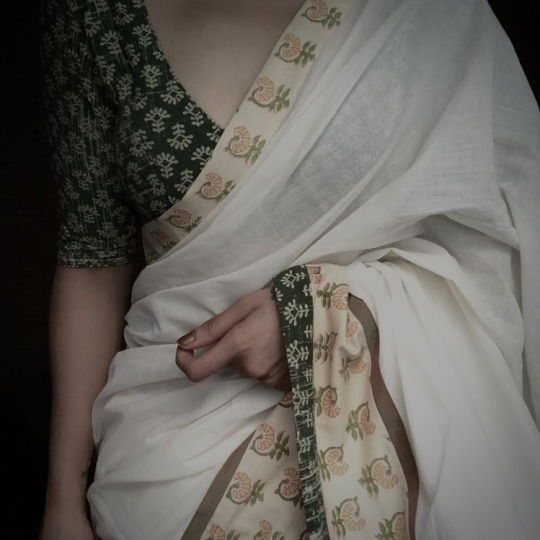
Summary: In which Ganga meets a mysteriously familiar cab driver
Warnings: A little bit of self-loathing Jake
Word Count: 1.1 k
☾ .・。.・゜✭・.・✫・゜・。.
If one were to take a look at the clear night sky, there are several things that one could see. It may be the stars, the deep universe beyond or even a little comet.
But when Ganga had looked up at the clear night sky, her eyes always searched for one thing. She had always garnered a fascination for the moon. The way it graced the night sky, the way she looked up at it whenever she felt sad, to feel its powerful rays enveloping her in a safety she always craved. There have been hundreds and thousands of tales forged about the dazzling delight that adorned the night and sometimes, morning sky, eclipsing its creation in shrouded mysteriousness. However, Ganga’s favourite tale was about the mysterious cab driver who had unintentionally fallen into her life on one special day.
It all started on a quiet Sunday morning. The birds were waking up to the light breeze that surrounded the morning atmosphere and she woke up feeling absolutely rejuvenated. Ganga had just had a great week and everything had just fallen right into place for her. Her bus was on time every single day, the barista got her coffee order correct every single morning, she was one step closer to getting a promotion, plus, herboss had announced bonuses for all staff. Stress had felt like a thing of the past and her body and mind were so grateful for the peace.
Ganga started her morning routine with a little bit of yoga and a relaxing bath. She had decided that she would reap the benefits of going to the temple. Draping her favourite forest green and off white saree around her, Ganga pleated the soft fabric, pinning it onto place with a safety pin. She lightly did her makeup, adding minimalistic jewellery and an emerald pottu that complimented the saree. She twisted her curly hair into a messy bun and wrapped some jasmine flowers around it, pulling a few tendrils put to frame her face.
The cab that she had called honked impatiently outside her home. She was in such a good mood that she decidedly ignored the impatient honk from the driver as she grabbed her purse and umbrella. Slipping on her sandals, Ganga locked the door behind her and set off down the stairs.
Undisclosed to Ganga, Jake Lockley was staring with his jaw slacked open at her figure as she descended the staircase. He was absolutely enraptured by her aura and beauty, so much so that he almost gave one of his alters control of the body. He watched as her sandal clad feet graced the stairs as if she were walking on air and the soft fabric of her saree rustled around her flawlessly. His eyes almost couldn’t believe the way that her face was being illuminated by the morning sun. It must have been a trick of the light, he thought, as the glow seemed to come from within Ganga. Steven and Marc were speaking but for the first time in a very long time he couldn’t concentrate on what they were trying to tell him. Jake was glued to his seat and he couldn’t move.
She opened the door and slipped inside the cab. Instantly, Jake was instantly hit with the tantalizing fragrance of jasmine and sandalwood and the heavenly sound of her bangles tinkling together. His gloved hands tightened his grip on the steering wheel as he tried hard to bury his emotions deep within himself. He made the grave mistake of taking in a deep breath, his lungs filled with the venom that is Ganga’s fragrance, drawing him deeper into the rabbit hole that is his feelings.
Her sweet voice drew him out of his mental torment. It was sweet and comforting, enveloping his heart like a safety blanket and glazing his brain like honey. Automatically, he felt his body turn like a puppet and he found himself staring into Ganga’s deep brown eyes. The second both of their eyes met, Ganga couldn’t help but wonder how familiar the man before her looked. She blinked and gave him a perplexed smile, her eyebrows knitting together in confusion. It was almost like he was part of a far distant memory, almost like a memory that her soul had kept from her for a long time.
“I hope you didn’t have to wait too long.” Ganga breathed, breaking eye contact and shifting, arranging her saree around her.
“Not at all.” Jake tried to sound like his normal self but even Khonshu was surprised at how small his voice sounded.
Jake peeled his eyes from her and hastily turned to the front. Despite trying hard to keep his eyes on the road, Jake felt his willpower slipping and would steal glances of her through his rear view mirror. As her eyes searched the outside, Ganga’s mind wandered to the man who was driving the cab.
Ganga had always wondered what love would do to her. Would it put her in a chokehold and make her feel restricted or would it make her feel free like a dove out in the wild? Will she ever find someone who would make her feel like she was the only woman on this planet? Did soulmates even exist?
All these questions and no one to answer them for her.
Sooner or later, the innate ivory gopuram of the temple came into view and Jake suddenly felt an overwhelming sense of desperation. For some reason, his heart refused to let her go and for the first time in his life, he felt a yearning like no other. He gripped the steering wheel and tipped his head, making sure that his hat hid his face and devoid him of any form of emotion.
Jake gazed at the tiny crescent moon that hung from his rear view mirror. A crescent moon, that's what he was. Jake had been having a difficult time getting a grip on how he came to be, and he felt the need to be forged as a weapon of mass destruction instead of a human. He knew he had been carved into the person that was needed to be Khonshu’s fist and to protect Marc.
Made for battle and not for love.
“I’ll see you then! Thanks for the ride.” Ganga said, holding out a note for him to take.
Jake turned and stared at her with big brown eyes that had the same comfort as Mother Earth. There it was again, the sense of familiarity that she couldn’t shake.
“No, señorita, you don’t have to pay. A treat for my previous impatience.” Jake said, shooting her a small smile.
“No I in-” Ganga started but Jake raised his eyebrows.
That seemed to do the trick. Her mind seemed to bend obediently towards his facial expression.
“Thank you. I hope you have an amazing day.” Ganga said, smiling shyly at the beautiful cab driver.
“You too, señorita.”
How curious…
Translations:
Saree: A sari is a women's garment from the Indian subcontinent, that consists of an un-stitched stretch of woven fabric arranged over the body as a robe, with one end tied to the waist, while the other end rests over one shoulder as a shawl
Pottu: A bindi or pottu is a coloured dot or, in modern times, a sticker worn on the center of the forehead
Gopuram: A gopuram or gopura is a monumental entrance tower, usually ornate, at the entrance of a Hindu temple
Señorita: Miss or Ms
Taglist: @pakhiya @mintpurplemnm @romanarose @soft-persephone @copingchaos @swiggy-needs-mental-help @brekkers-desigirl @fandxmslxt69 @randomnessfangirl @in-between-the-cafes @bodhisattva11 @marc-spectors-wife @nyotamalfoy @steven-grants-world @jbearre85 @whatsliferightnow @minigirl87 @wonderfulboiledcoldpotato @alexxavicry @autismsupermusicalassassin @flordelalunas @marygraceee @lia275 @euphoricosmo @sky-robin @my-secret-shame-but-fanfiction @celiaswife @sugarpunch-princess @violet-19999 @ghostheartbeat @kierramofficial @ryebreadsworld @your-voice-is-mellifluous @lil-stark @absolutelybloodyhopeless @gloriouspurpose01
Reblogs are appreciated ~~~~
#tale of the crescent moon#moon knight#jake lockley#jake lockley fanfiction#jake lockley x oc#jake lockley x ganga#jake lockley x desi!oc#jake lockley x desi reader#jake lockley x desi!reader#moon knight x oc#moon knight x desi!oc#moon knight x desi!reader#moon knight fanficton#moon knight fanfic#jake lockley fanfic#jake lockley fluff#jake lockley angst#moon knight fluff#moon knght angst#original character#oscar isaac#oscar isaac characters#marvel fanfic#marvels moon knight#mini series
51 notes
·
View notes
Text

0 notes
Note
Sup how you doing dude?
pretty good currently... tho dreadfully counting the days before ive to head off to college (1st sept). read the kyoshi novels the other day. bathed in the ganga today after years and we had a rudrabhishek at home. oh and pet a cat today, it was very vocal youd have liked him.
hows you?
13 notes
·
View notes
Text
HLAW: Day 5—Hana(ra)’s Perfect Wedding!
Like several members of the fandom, I too ship Hana and Kiara together, and though I have yet to write the fic where they fall in love, I’ve long since come up list of head canons about their wedding. I originally meant to share this for Kiara’s first appreciation week, but I wasn’t able to finish on time. Fortunately, one of the benefits to being a Hanara shipper is that their romantic content can work for both characters’ weeks! 😆
Tagging @hanaleeappreciationweek and the stupendous hosts @lizzybeth1986 and @sazanes!
~ * ~ * ~ * ~ * ~ * ~ * ~

This moodboard was designed to reflect the Pinboard that Hana would 100% make for her wedding to Kiara given the numerous ones she’s crafted in canon.
Bridal Ring Sets


The ring on the left is the one Hana chooses for Kiara; I initially searched for a ring similar to Hana's ring for MC in canon but didn't want a one-to-one match, and then I diverged further by selecting one with a vine design to reference Castelsareillan (aka Rowan’s tattoos which I head canon were tribal in nature and design). The side stones are diamonds since they’re both the ducal stone and Kiki’s birthstone, but Hana went with moissanite for the central stone since it's not as hard and refracts more multi-colored light, representing how there's more to Kiara than what the surface may show and that she is a lot more kind and sweet and thoughtful than her tough facade leads people to expect.
For the ring Kiara gives to Hana*, resetting a family heirloom is very popular in France, especially with traditional affluent families. The ruby was originally from her late maternal grandmother’s engagement ring, and Kiara had it reset in a rose gold band to match her own since Hana proposed first. Due to the canonical Cordonian tradition of lovers throwing a copper, a silver, and a gold coin into a well to guarantee that they stay together for eternity, I head canon that rose gold—which is made of those three metals—is a popular choice in Cordonia for engagement/anniversary jewelry. The wedding band is inlaid with opals since they're the ducal stone of Hana’s duchy, Chrysopolis.
*I was also partly inspired by @masked-alien-lesbian’s beautiful pick to find a more floral design than my original choice, and when I found one with embellishments that mirrored butterflies as well, I knew it was the one.
Bridal Party
In Chinese numerology, 8 is considered one of the most auspicious numbers, with 2, 3, and 6 also being lucky in general. As such, the bridal party is a total of 6 people (3 for each side) who combined with the 2 brides equal 8 in total.
Hana's Bridesmaids: Ally (MOH), Olivia, and Ganga
In my version of events, Olivia actually does offer a genuine apology to Hana in the beer garden scene at the end of TRR2, and so by the time Hana’s planning her wedding, the two have grown close enough for her to ask Liv to be her bridesmaid.
The name Ganga may be familiar to anyone who read Hana’s character page, as she’s one of Hana’s second cousins on her mother’s side. They meet and bond over the course of my reimagined TRH series Silver Spoons.
Kiara's Témoins: Penelope (MOH), Zeke, and Savannah
Instead of bridesmaids and groomsmen, French couples have témoins (witnesses) of any gender/age that stand next to them during the ceremonies. While Penelope is still courteously given the MOH title, Ally is the one who provides the most support in regard to the planning/corralling.
Wedding
Following Moroccan and Chinese traditions, the wedding celebration is several days long. I also head canon that many western regions of Cordonia outside of the five major duchies have three-day-length celebrations, including the regality from which Hana’s maternal family hails. The negafa (wedding planner) is Kiki’s paternal aunt Leïla, who is assisted by Hana’s own aunt Yawen.
Day 1: Castelsareillan
Hammam
In Morocco on the first day of a wedding celebration, the bride spends a day in the hammam (a type of steam bath or place of public bathing akin to a spa) with her companions, treating themselves with multiple body masks, scrubs, and massages as part of a bridal ritual of purification and beauty. Hanara chooses the baths and spa in Applewood visited in TRR2 and attend with their bridal party sans Zeke.
Bachelorette Party
Their joint party is thrown in Côte d'Or, the Cordonian gambling district visited in RoE which in my verse is located in one of Castelsareillan’s vassalages off the coast. Aside from the standard night on the town events, Ally also arranges a series of chuangmen (Chinese door games) for the couple to play: an alcoholic version of the Four Flavors of Life, Q&A Tests, and a Sweet Serenade karaoke session.
The theme is a rainbow, with everyone wearing a different colored dress: Ally in red, Ganga in orange, Kiara in yellow gold, Olivia in green, Penelope in blue, Savannah in purple, and Hana in pink. All of the bridesmaids wear the same cap-sleeved sequined style, while the brides’ outfits are pictured below:

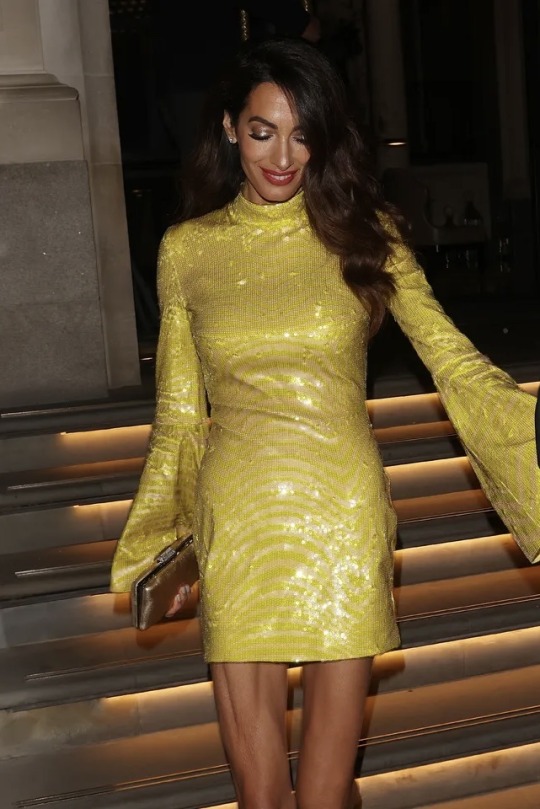
Day 2: Samsara
Henna Party
Both Morocco and India have wedding traditions involving decorating the bride’s hands and feet with henna (mehndi being the South Asian term for the body art itself). Lorelai’s cousin Aparna offers her estate in Samsara (a western regality in Cordonia) as the venue, and the party is a long affair filled with food and music.
Hana wears a pink sari while Kiki dons a green kaftan. Since the brides plan to walk down the aisle the next day, they’re carried to their seats in the amaria (an elegant roofed platform) by four men: Zeke, Drake, Bertrand, and the male cousin Kiara mentions in TRR3 who I named Patrice and head canon is Joëlle’s nephew.
Having forgone a wedding shower, the brides open their gifts during the party, some of which revolve around the traditional “something old” rhyme (with the givers corresponding to whose side they walk on):
Something Old: received during the tea ceremony
Something New: white lotus hair stick (Ally), silver and onyx Berber necklace (Zeke)
Something Borrowed: Scarlet Handkerchief (Liv), Golden Tiara* (Penelope)
Something Blue: garter set (Savannah), nagapadam mala (Ganga)
*The Golden Tiara is the House treasure that was granted to the Amaranth’s when they were elevated in 1600 C.E. It was rumored that while donned, the makeup of any who wore it would remain flawless.
Rehearsal Dinner
The ribbons and bows from unwrapping the gifts are turned into two giant bouquets that the brides use for the following wedding rehearsal in place of the garlands they’ll be using for the real ceremony. They also incorporate some elements of the nischayam, an Indian Malayalee engagement ceremony generally held to formally announce the marriage, which includes exchanging horoscopes as well as the mothiram maattal (ring exchange). Since pigs are favored animals in Chinese culture, Kiara’s pet teacup pig Tambour acts as the ring bearer. At the end of the rehearsal dinner, the couple signs their marriage license following both French and Moroccan tradition (the latter of which call this ceremony Drib Sdak).
Day 3: Chrysopolis
Shutou & Jing Cha
The morning of the third and final wedding day begins in Hana’s manor in Chrysopolis with the Chinese shutou or hair combing ceremony performed by their mothers Lorelai and Joëlle. Immediately afterwards, the two change into their traditional formal wear (Hana in a qungua and Kiara in a takshita) before heading downstairs for the jing cha or tea ceremony, where their aunts have built an ancestral altar for the occasion.
The ceremony is done with both families at the same time, and in return for the tea that the couple offer, their families offer them golden jewelry and red envelopes filled with money called hongbao. They also receive from their fathers the “something old” gift that’s been passed down by their late grandmothers: a set of golden phoenix & dragon bangles for Hana and silver Berber bracelets for Kiara.
Vow Exchange
The exchanging of vows takes place outside in the sunflower garden. Kiki’s four-year-old cousin mentioned in TRH2 serves as the flower girl, and the bridal party are all dressed in a reddish mulberry and adorned with golden jewelry*. The brides change into their white outfits (Hana wearing the same dress as in canon and a veil, while Kiara dons a jumpsuit with a cape) and walk down the T-shaped aisle on the arms of their fathers to meet each other.
Hakim place Kiara’s hand in Hana’s and Xinghai hands them a pair of scissors before leaving the two to continue their march together. In a slightly altered French tradition, they must cut through the rows of white ribbons stretched across the aisle to reach the dais, where they exchange a set of garlands made from roses, fire lilies, jasmine, sunflowers, and Vescovi (magic) flowers in the Hindi jayamala ceremony, a pledge which substitutes their “I Do’s.”
Liam acts as the officiant and joins the couple’s hands together following the Agni Hito tradition of using a red string to represent their fates being bound. He hands them each a lambatha (Greek taper candle) to hold as the brides recite their individual customized vows to one another. They then use the lambathes to light a brazier filled with Heartoak wood which is placed before them.
This functions as the sacred fire for the saat phere, a Hindu wedding ritual continued by the Agni Hito where the couple walks around the fire seven times while reciting specific vows. Each circuit holds a certain meaning. Once the seventh one has been completed, Liam pronounces the two wives, and butterflies are released as they share their first kiss as a married couple.
*One of the bridal party’s statement pieces is a golden pin in the design of Hanara’s onnamon, pictured below. Mon are Japanese emblems that function similar to heraldic charges, and onnamon specifically are created by women after marriage through modifying her original family kamon. The Agni Hito, being of Japanese lineage, continued to use them within Cordonia. After becoming the Duchess of Chrysopolis, Hana adopted a new mon by turning her mother’s kamon/charge (the cherry blossom) into a butterfly-shape.
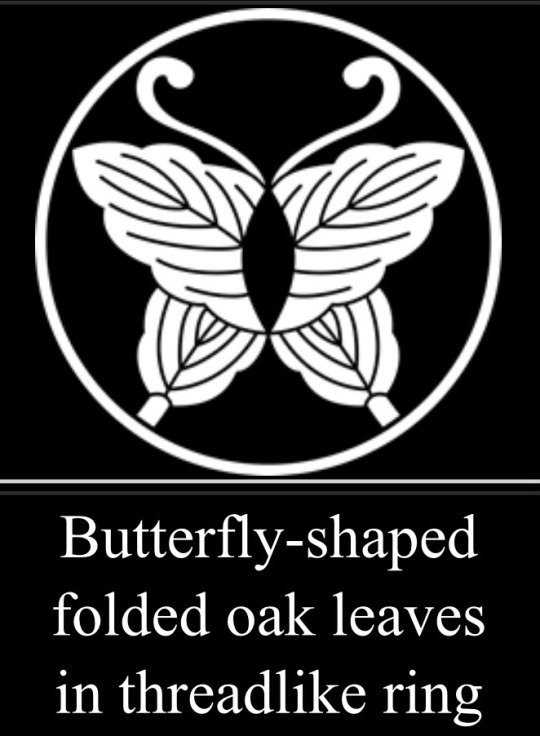
Reception
The rice toss is performed while the newlyweds exit down the aisle before everyone heads inside, where the vin d’honour (the French equivalent of a cocktail hour) is held. Kir Royale cocktails made with Cristal champagne and chocolate-coated almonds called les dragées are served, and both mahjong and mancala are played. Once all of the ~200 attendees have been greeted, they drive to the banquet hall with a liberal use of horns preceding the “just married” limo.
Each guest upon their arrival signs the livre des visiteurs (guestbook), delivers their hongbao, touches a set of oranges for good luck, and washes their hands in the orange blossom water. Ouzo and Moroccan mint tea are offered until everyone has been seated for the grand entrance, where under a shower of petals and sparklers, the newlyweds perform a TRR 2.0 Olivia-style change into their reception dresses pictured below (Hana on the left and Kiara on the right):


Thanks to @lizzybeth1986 for sharing the tumblr post with these lovely designs!
They step onto the floor with their fathers for the first dance, which they finish as a couple following French tradition. The song is one that Hana composed titled Le jardin de l'amour and performed by Kaitlyn Liao. The feast itself is a ten-course affair that contains a vast variety of cultural dishes, including drunken shrimp, butter chicken, Peking duck, pork jiaozi, tangine, bird’s nest soup, and seffa. Maxwell serves as the emcee, and toasts are given in between the various acts.
Friends provide most of the entertainment, including a ballad sung by the Cordonian Quartet, but there are also lion dancers and firecrackers following Chinese tradition. Halfway through, the couple changes into their final outfits for the night (a red qipao for Hana and a kaftan jumpsuit for Kiara). Once the last course has been served, the croquembouche (a French dessert that serves as the wedding cake) is wheeled out along with a Cordonian Ruby for the apple-cutting ceremony.
After feeding each other a slice of both, the dancing begins. The party lasts long into the night, but just before the newlyweds retire for the evening, they take part in another French tradition: eating a dish from a brand new pot de chambre (chamber pot). The bottom is lined by bananas and covered with melted chocolate before the leftover alcohol from the wedding is poured in. After the couple’s takes a drink and eats a spoonful of the gooey contents, the rest is left to be finished off by the bridal party.
Honeymoon
Lorelai’s wedding gift is the most expensive home in China, and it is here in Shanghai where Hana and Kiara spend the first week of their honeymoon, which ends with the Mid-Autumn Festival. The second week is spent in Tours, France where they go cycling and visit the famous châteaus before returning to Cordonia just in time for the Last Apple Ball.
~ * ~ * ~ * ~ * ~ * ~ * ~
Sources
#the royal romance#trr#hana lee#kiara theron#hanaleeappreciationweek#hlaw 2.0#hlaw day 5#head canons#had the whole thing written out but putting this post together took much longer than expected#but got it finished nevertheless and by the deadline!#now i am going to pass out for the 3 hours i have left before work
10 notes
·
View notes
Photo
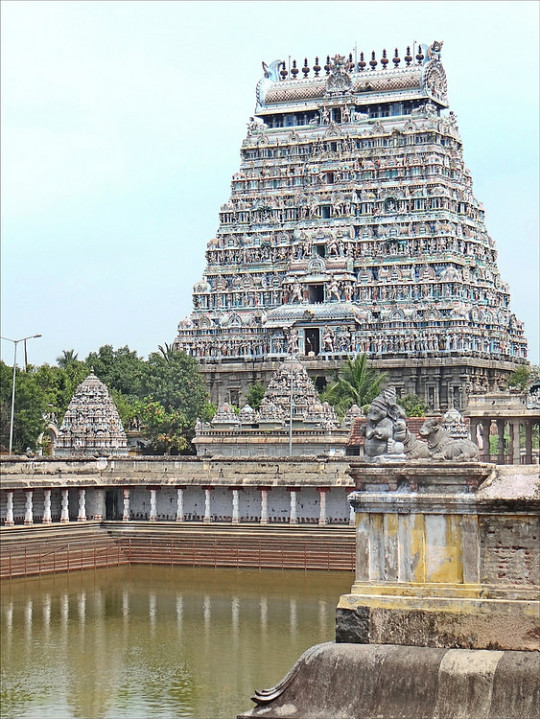
Chidambaram
Chidambaram (Cidambaram) is an important Chola temple site in Tamil Nadu, southern India. Most of the temples at Chidambaram were built in the 12th and 13th centuries CE. The site is dominated by the huge gateway tower of the Nataraja temple but Chidambaram also boasts the first Devi or Amman shrine, the first Surya shrine with the distinctive stone chariot wheels which would adorn many subsequent temples, and the first large Siva Ganga tank. In this respect Chidambaram is something of a transitional site, linking elements of the old and new styles of Indian temple architecture.
The name Chidambaram, one of several from antiquity, derives from the Tamil Cirrambalam, meaning 'little hall'. The site was chosen because according to mythology it was the precise spot where the Hindu god Shiva had once danced in a grove of tillai trees. The dance was, in fact, a competition between Shiva and Parvati and naturally the great Shiva won. The story became a popular subject in Hindu art over the centuries.
The site is enclosed within four perimeter walls and covers a rectangular area of 55 acres. Within the compound are shrines, halls, temples, ornamental gateways, and a large ritual bathing pool, known as a Siva Ganga tank, which is surrounded by cloisters. Inscriptions claim the site was built by various Pandya kings and local rulers but none are contemporary with the dates the buildings were actually first constructed. The walls and east gopura (gateway) may be ascribed with greater certainty, and were probably built by Kulottunga III, who reigned from 1178 to 1218 CE.
The Nataraja temple was constructed between c. 1175 and c. 1200 CE. The actual temple shrine is relatively modest as by now in Indian architecture the gopuras had become the most important structures, at least in terms of aesthetics. The twin sacred chamber was, however, adorned with copper sheets covered in gold by successive Chola kings. The shrine is preceded by a dance hall and large entrance porch with columns (mandapa).
The massive granite and brick east gopura dominates the site but there are three other gopuras on the north, south and west sides (the earliest). The corbelled roofs diminish as the structures rise and are finally topped with the usual barrel-vaulted roof (sala), the eastern gopura also having a row of 13 decorative finials. The east gopura has a proper interior floor at each of its nine levels and there is an interior staircase which climbs to the very top of the building. All four gopuras have false windows on their facades, typical for this kind of structure, and pairs of pilaster columns set at regular intervals. The second floor of each gopura also has a passageway which worshippers ritually walked around. The entrance archways all have coffered ceilings decorated with relief panels.
Of particular note at Chidambaram are the thousands of sculptures adorning its buildings. In particular there are many statues of women in a wide variety of dance postures. Many statues are accompanied by quotations from Hindu literature which provide an invaluable reference for scholars. There are also figures of the four dvarapalas (guardian demons), the dikpalas (cardinal directions), many figures of Shiva performing heroic deeds, various other deities such as Vishnu, Devi, Sarasvati, and, unusually in southern architecture, river goddesses.
Finally, Chidambaram is also famous for its 17th century CE Nayaka ceiling paintings which decorate the Shivakamasundari shrine of the Nataraja Temple. More than 40 panels depict scenes from the life of the saint Manikkavachakar, a devotee of Shiva.
Continue reading...
96 notes
·
View notes